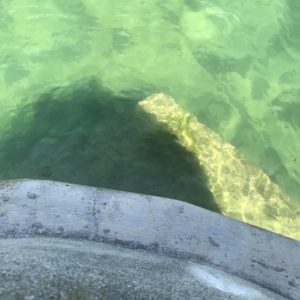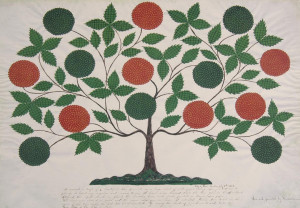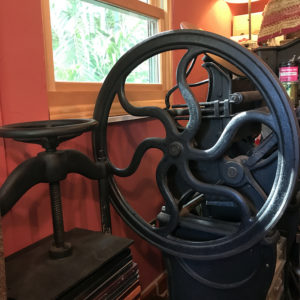Perhaps it has something to do with working from home during quarantine, with its o-so-regular rhythm, but summer this year really feels like it’s flying by. And somehow here we are already, mid August… and this day, the 15th, brings four important mid August events.
First, the Dog Days of Summer officially end today: Sirius, the Dog Star, leaves its place of summer prominence. I tend to start singing Florence + the Machine’s “Dog Days are Over” about now, and the song tends to stick in my head for days and days this time of year. I picture happiness hitting me like a train on a track and I picture those very blue women beside me as I sing the song each summer. Those blue women remind me of our cat Haden’s veterinarian… and then I picture Dr. Irma Morales as a back up singer for Florence Welch, clapping her hands: one-two/three.
What can I say? My mind drifts and wanders. It has always done this, since I was a boy. And ever since I was a boy, the 15th of August meant a supper of Cucuzza Longa––the long, snake-shaped gourd that we Italians (Southern Italians, anyway) cook up with egg and parsley and grated cheese for the Feast of the Assumption, which also is celebrated this day. My grandmother, Assunta, was born on the Feast of the Assumption in 1898. Her parents naturally named her in honor of the day. The Feast of the Assumption also brings the ancient Italian holiday of Ferragosto. Most Italians, this time of year, will be at the seashore, cooling off. Smart.
And on the other side of the world, in Japan, the 15th of August is the day that Obon is expected to be wrapping up. It is the annual summer festival honoring the dead. Obon is celebrated in July in some prefectures of the country, but most celebrate now, in mid August. There are no set dates, but Obon was expected to begin this year around the 13th, ending tonight, as thousands of illuminated lanterns are set upon the sea. Each lantern sails across the water, carrying the soul of an ancestor who had returned to the land of the living for a brief summer visit, back to their home on the distant shore. It is a sight to behold. Thousands and thousands of lanterns, bound for the horizon, sailing ho, heaving ho.
Image: Lago di Como in the vicinity of Bellagio in Italy… a likely spot for a Ferragosto holiday today. Seth and I were there in the summer of 2019: a very different time, no?
Please save an upcoming date with me! August 24 brings a great celebration with an odd name: it’s the Bartlemas Wayzgoose, and I’ll be hosting the online, virtual Library Wayzgoose Festival for the Jaffe Center for Book Arts at Florida Atlantic University Libraries. It’s a video event full of good stories and great music. The Bartlemas Wayzgoose is an old printers’ celebration that comes about every 24th of August with the waning summer. My guests are Miami letterpress printer Catalina Rojas of Puropapel, and the Lubben Brothers––pretty much the best musicians around these parts. Lots of great Wayzgoose fun is in store for you. The video premiere will be at the Convivio Bookworks Facebook page and at www.jaffecollection.org and at the Jaffe Center’s Vimeo and YouTube channels, too (essentially, we’re making it really hard for you to miss). The premiere is on Bartlemas night, Monday August 24th, at 7 PM Eastern Daylight Time, with video available anytime after that, from wherever you are in the world. I think you’ll really love it. I’ll be posting more about it as Bartlemas approaches, so watch the blog and our social media pages at Instagram and Facebook (@conviviobookworks). –– John



